KANDAHAR PROVINCE, Afghanistan - At the base of the Shah Maksud mountains in northern Kandahar province beams an eye-catching structure visible from well over a mile away. This bright, teal minaret shines like a beacon to those passing through the valley.
It is a sacred destination thought to have been the location of an important battle in the early history of Islam, and many regard it as the third holiest Islamic site in all of Afghanistan. It is known as the Ziarat-e Shah Maqsud Shrine, and the shrine's visibility - as well as the coordination between local citizens and the district governor - has been growing with time.
As the summer hotly approaches its peak here in the mostly desertous Khakrez district, the minaret of the Ziarat-e Shah Maqsud Shrine is undergoing a meticulous refurbishing job. The job is set for completion in the coming weeks thanks to the effort of district citizens. That effort was the result of a plan developed by Qaydum Khan, the district governor.
Khan, a sociable man in his early fifties who spends much of his days meeting with citizens of Khakrez at the district center, also hand-picked the color for the shrine's new minaret. The old, deep navy blue tile has been almost entirely replaced with a seamless, aqua-marine finish.
"The color," Khan says through an interpreter, "was chosen because it could be seen from such a great distance away."
It is important that it be so visible, he explains, because of what the shrine means to the people of Khakrez. It's an expression of the Afghan government's commitment to Khakrez, he says.
Approximately 50 meters from the shrine is the district bazaar, where citizens sell a variety of handmade and imported products. Because of its status as a spiritual and tourist destination, the shrine accounts for a large portion of the commerce at the Khakrez bazaar.
One of the Afghan vendors - a clean-shaven father of two whose products range from kerosene to stuffed animals - remarks on how pleasing the shrine looks compared to how damaged it appeared only a short while ago.
The damage he referred to, explains a Combined Joint Special Operations Task Force - Afghanistan civil affairs sergeant, was the result of a Taliban attack almost two years ago.
"[The Taliban] came into town and shot up the district center, broke windows and pretty much wrecked the place," the sergeant says. "The district governor has been trying to clean the place up."
Kahn initiated the shrine project with CJSOTF-A's civil affairs team in Khakrez. Kahn also distributes the funding for its repair in conjunction with an ongoing project to renovate the district center.
Recently, both the district center and bazaar have been bustling with activity.
On the morning of June 10, for example, Kahn was swamped with visitors and friends from throughout the district. None of them seemed at all worried for their safety. But this was largely a result of the significant Afghan National Security Forces presence in Khakrez, a U.S. Special Forces sergeant who works in the region says.
On this particular day, the sergeant was visiting the Khakrez bazaar to purchase a few items his team needed. He is greeted by vendors as children play marbles in the bazaar square. Because he can visit this bazaar, he saves a long trip to Kandahar Air Field. The sergeant says this is a luxury which others in Khakrez can count on. It also marks a big change in the tone of the district before renovations began on the shrine approximately six weeks ago.
The district center is a short walk from where Afghan National Police and Afghan National Army are based in Khakrez. Kahn dines with these ANSF personnel daily. It is at the district center, a three-story building which still retains some of the elegance it once had in spades, that Kahn is able to stay tuned in to what the ANSF is tracking in the area.
Their close proximity helps the governor and the ANSF to coordinate their actions. This June morning, Kahn shares chai with the ANP as they discuss the results of the district shura, or community forum, held the day previous. Kahn, barefoot and seated atop a large carpet, says many villagers attended the shura. But there is still much work to be done, he adds.
Just then, hammering could be heard as a few citizens were one step ahead of him: renovations on ceiling and walls of the district center's second floor were already under way.
"So long as the ANSF stay vigilant and the governor sustains this level of engagement with the people," the civil affairs sergeant says, "Khakrez could be a serious contender as a top Afghan tourist destination."
Until then, visitors to the Khakrez shouldn't have much trouble figuring out where to go to find the third-most holy Islamic site in the country. They need only look for the bright teal shine of the Ziarat-e Shah Maqsud Shrine's new minaret.
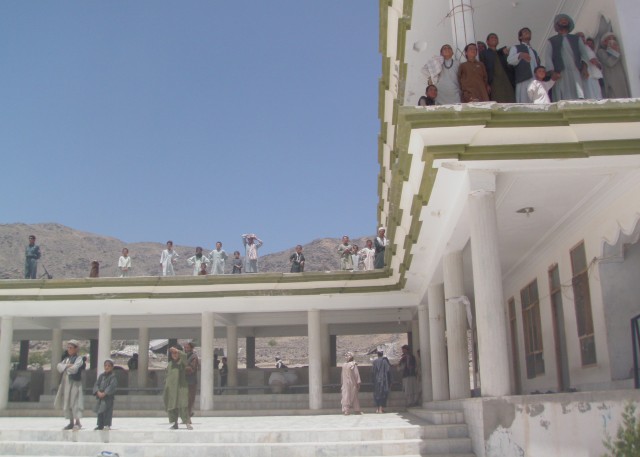
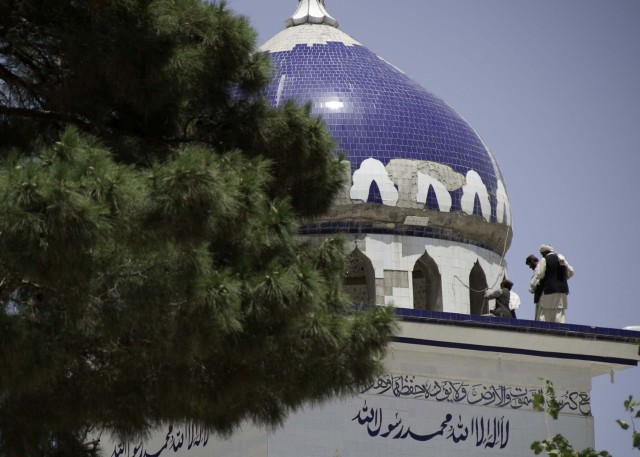
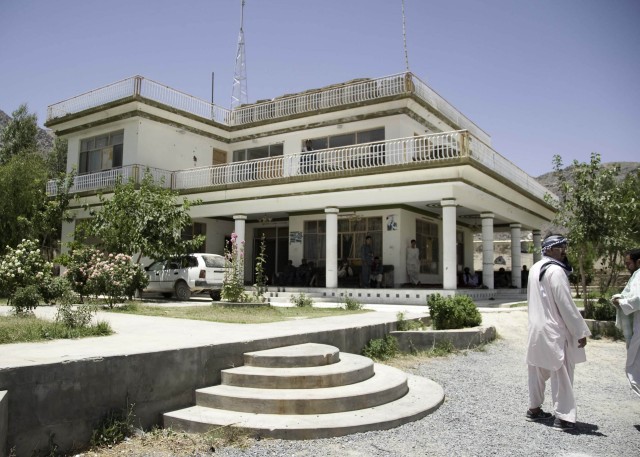
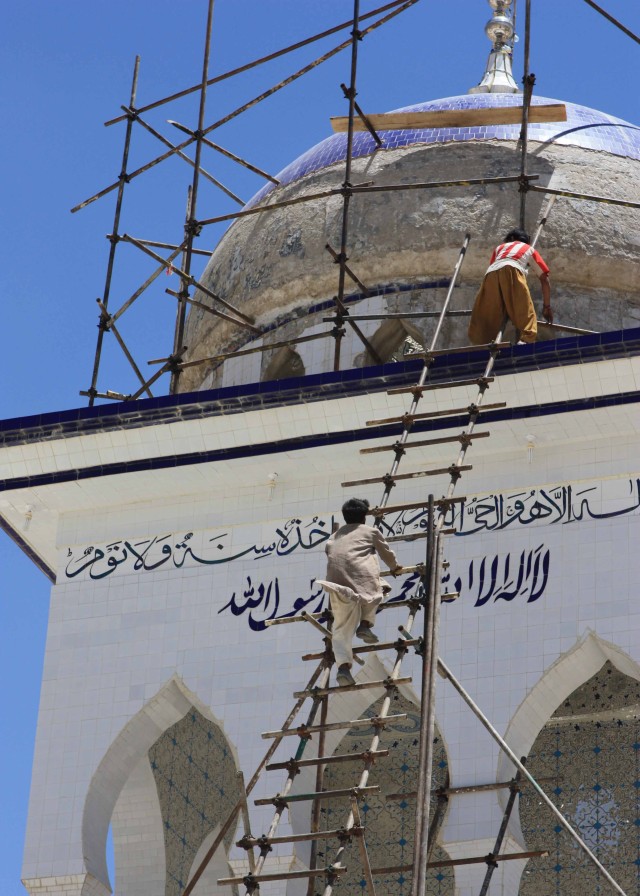
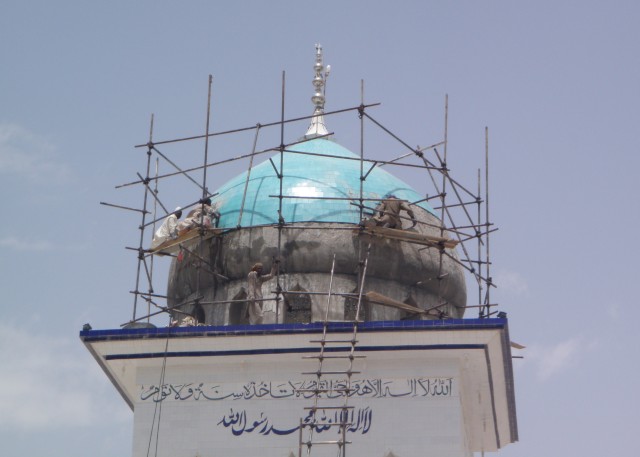

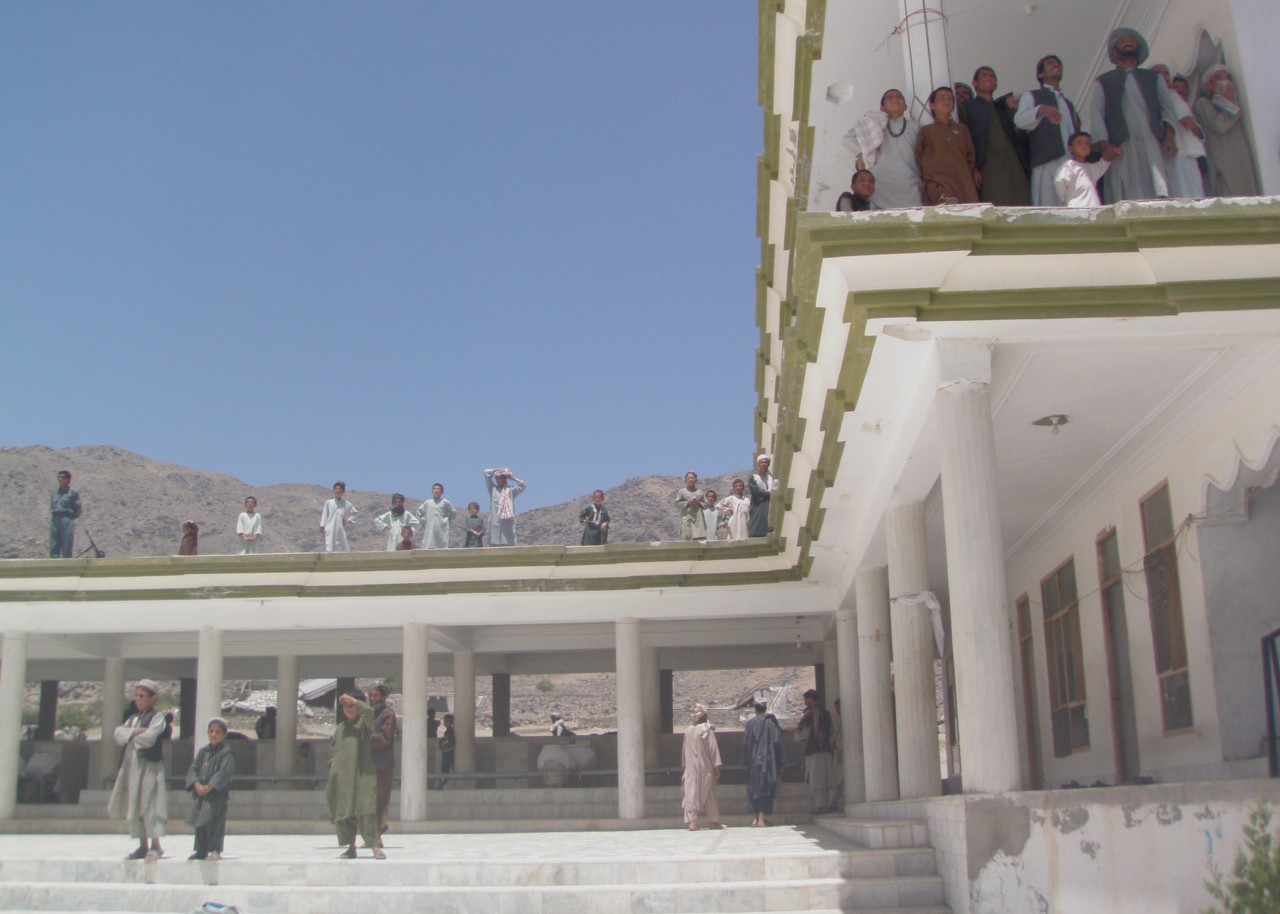
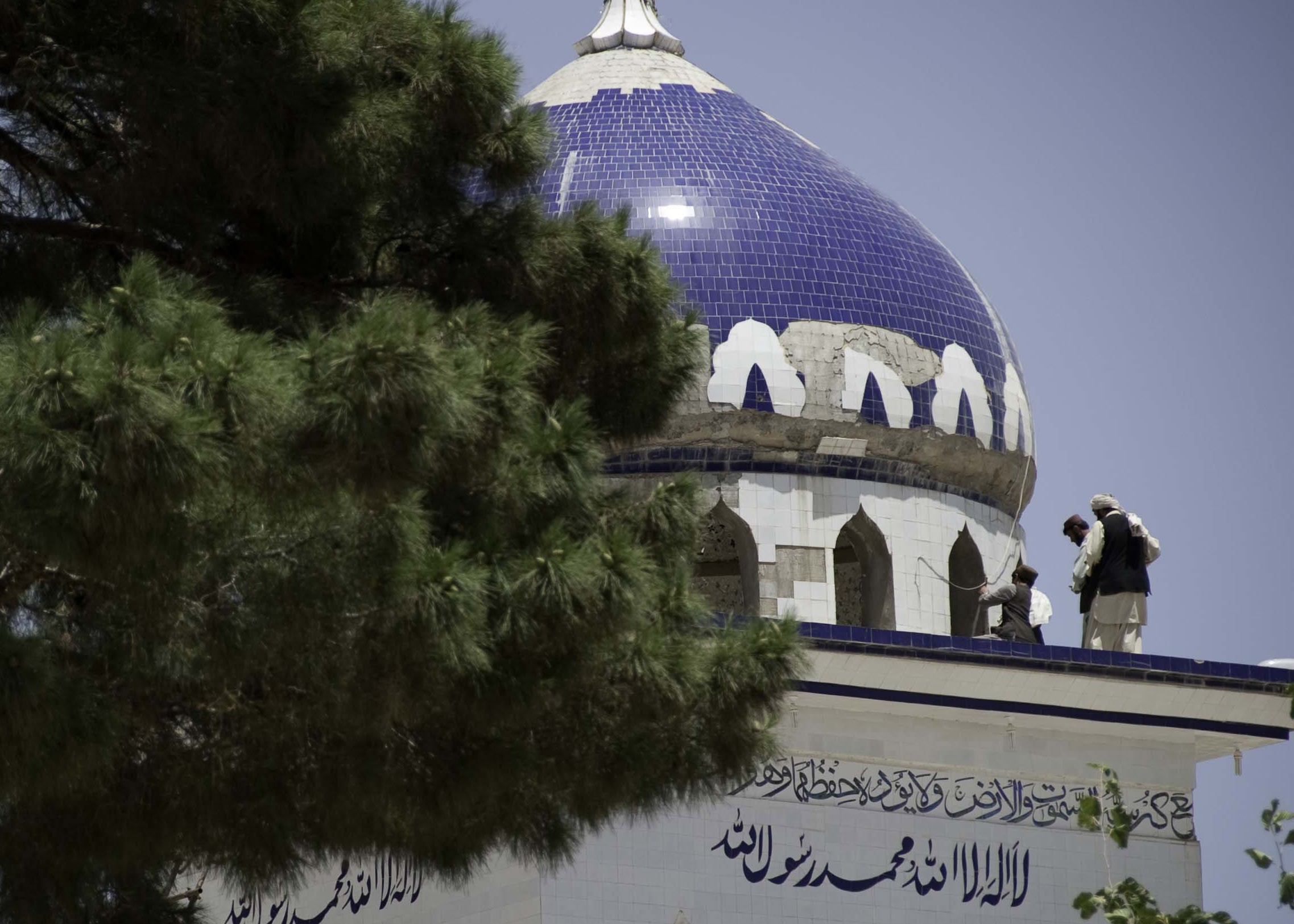
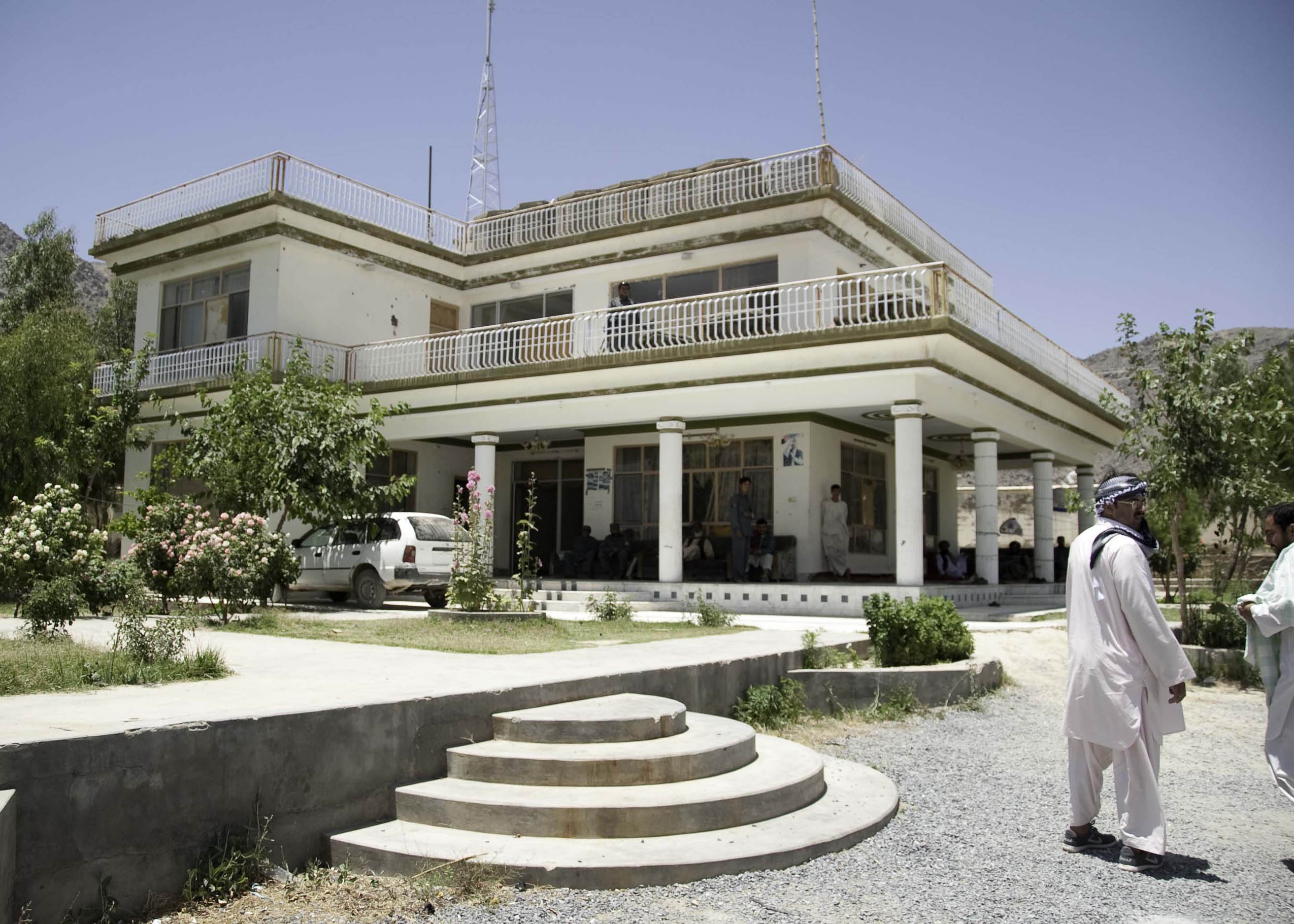
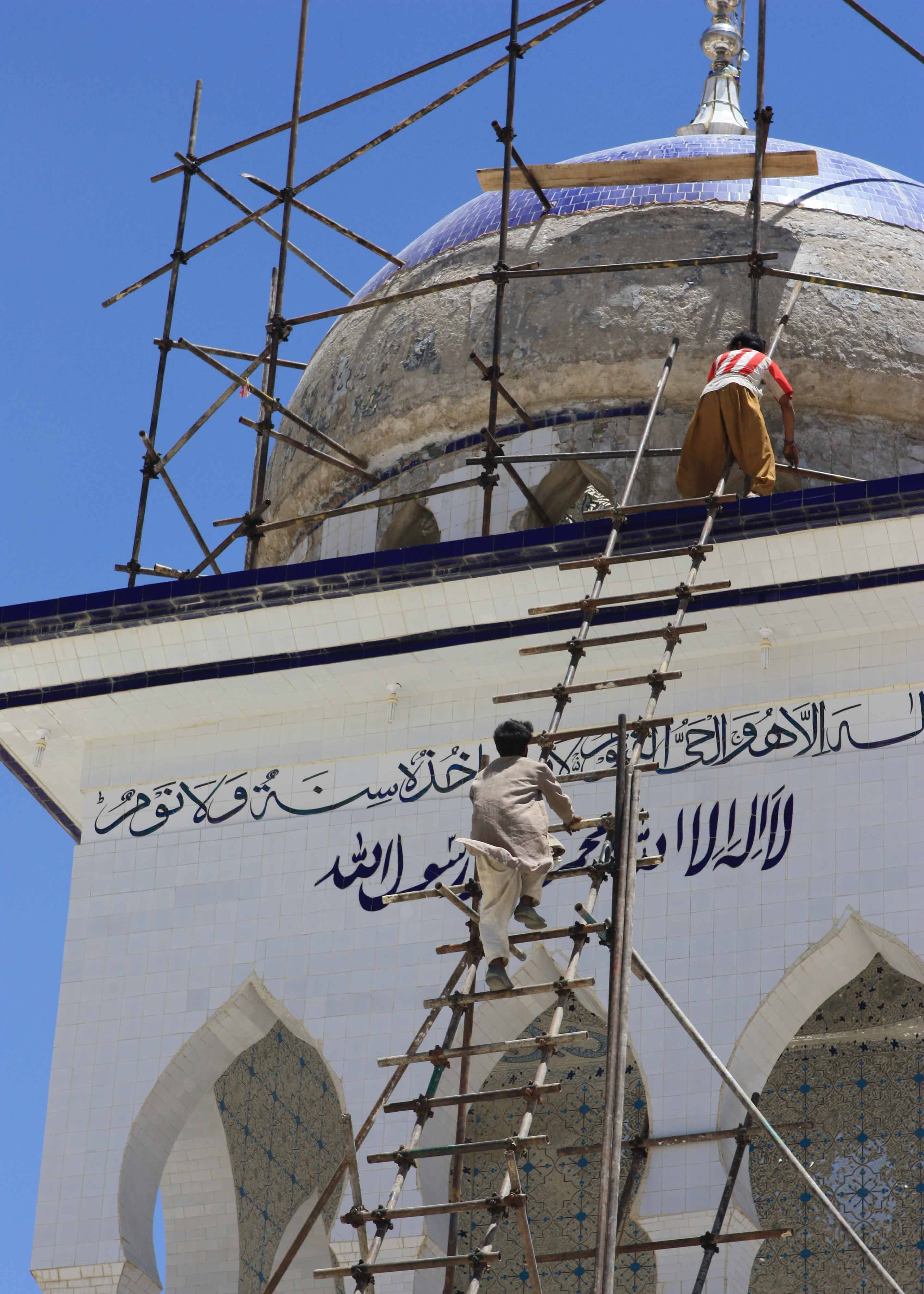


Social Sharing